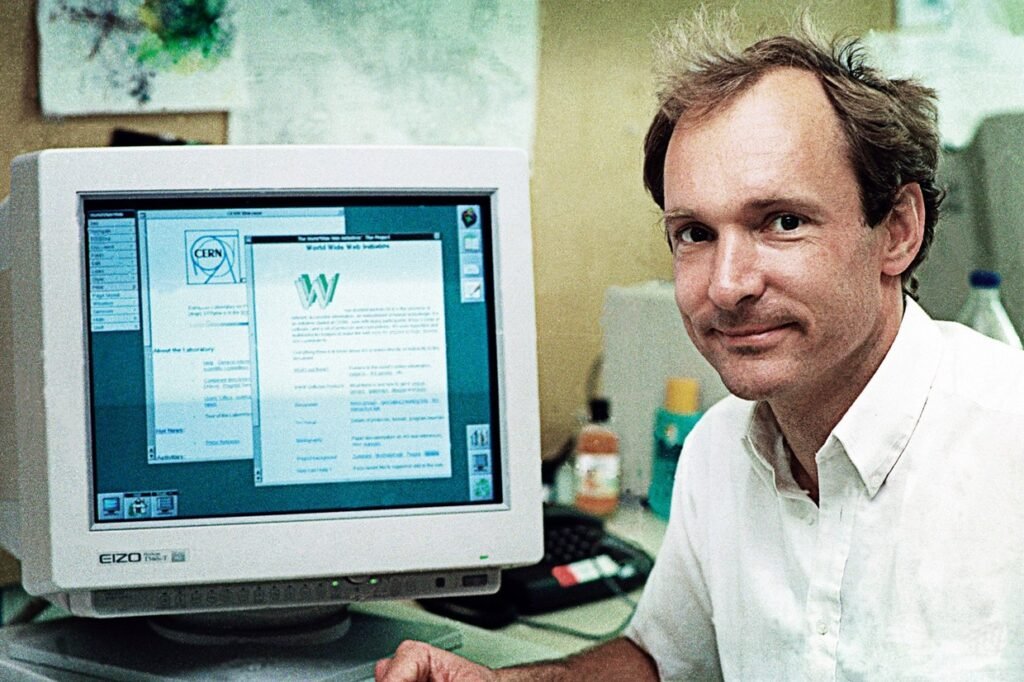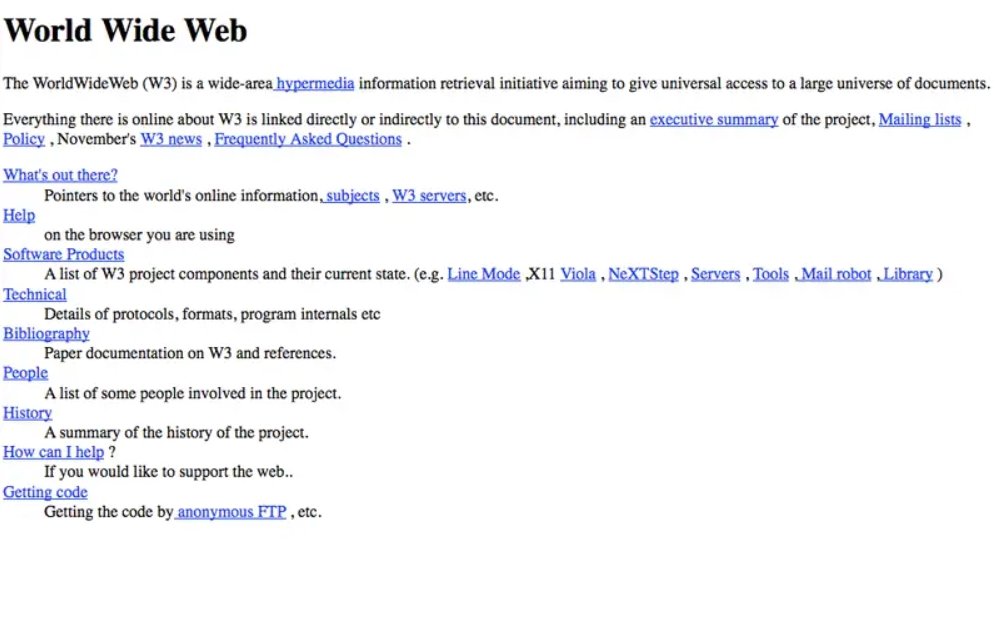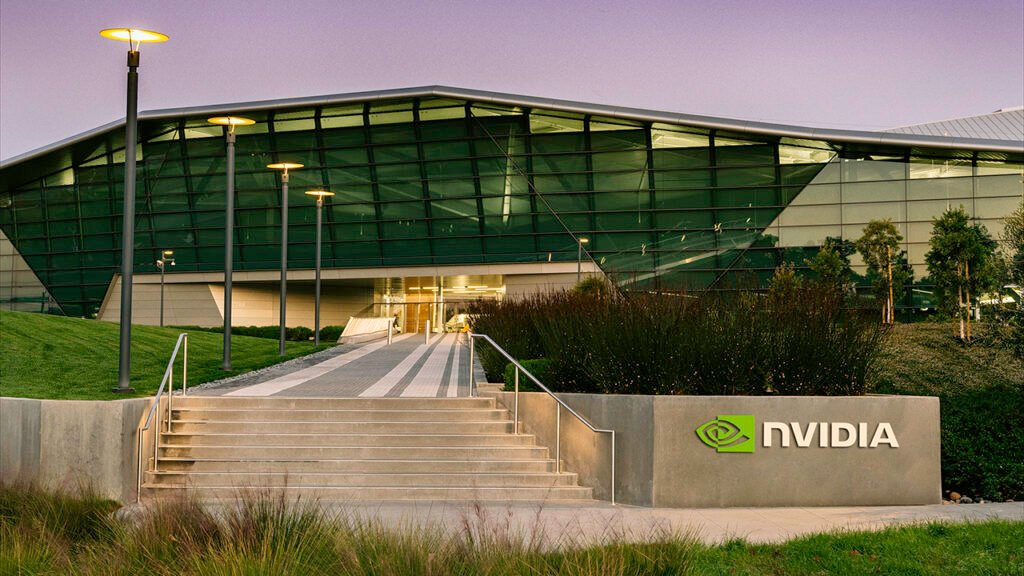Introduction
The World Wide Web (WWW), commonly known as the web/website, has transformed the way we live, work, and communicate. This vast information network has evolved significantly since its inception, influencing every aspect of modern life. This article explores the history of the web, tracing its development from the early concepts of hypertext to the sophisticated, interconnected platform we use today.
The Origins of the Web

The story of the web begins with the vision of a British scientist, Sir Tim Berners-Lee. In the late 1980s, while working at CERN (the European Organization for Nuclear Research), Berners-Lee saw the need for an efficient way to share information among researchers. In 1989, he proposed a system called the World Wide Web, which would allow documents to be linked together using hypertext. This proposal aimed to create a global information space where users could easily navigate and access interconnected documents.
The Birth of the Web
In 1990, Berners-Lee, along with his colleague Robert Cailliau, developed the first web browser and web server. The first website, info.cern.ch, went live in 1991. This site provided information about the World Wide Web project and served as a demonstration of the web’s capabilities. The early web was primarily used by academics and researchers, but it laid the foundation for the massive growth that was to come.
Where the Web Was Born

Tim Berners-Lee, a British scientist, invented the World Wide Web (WWW) in 1989 while working at CERN. The Web was originally conceived and developed to meet the demand for automated information-sharing between scientists in universities and institutes around the world. CERN is not an isolated laboratory but rather the focal point for an extensive community that includes more than 17,000 scientists from over 100 countries. Although they typically spend some time on the CERN site, the scientists usually work at universities and national laboratories in their home countries. Reliable communication tools were therefore essential. The basic idea of the WWW was to merge the evolving technologies of computers, data networks, and hypertext into a powerful and easy-to-use global information system.
How the Web Began
Tim Berners-Lee wrote the first proposal for the World Wide Web in March 1989 and his second proposal in May 1990. Together with Belgian systems engineer Robert Cailliau, this was formalized as a management proposal in November 1990. This outlined the principal concepts and defined important terms behind the Web. The document described a “hypertext project” called “WorldWideWeb” in which a “web” of “hypertext documents” could be viewed by “browsers.” By the end of 1990, Tim Berners-Lee had the first Web server and browser up and running at CERN, demonstrating his ideas. He developed the code for his Web server on a NeXT computer. To prevent it from being accidentally switched off, the computer had a handwritten label in red ink: “This machine is a server. DO NOT POWER IT DOWN!!”
The First Website and Early Development

info.cern.ch was the address of the world’s first website and Web server, running on a NeXT computer at CERN. The first Web page address was http://info.cern.ch/hypertext/WWW/TheProject.html. This page contained links to information about the WWW project itself, including a description of hypertext, technical details for creating a Web server, and links to other Web servers as they became available. The WWW design allowed easy access to existing information, and an early web page linked to information useful to CERN scientists (e.g., the CERN phone book and guides for using CERN’s central computers). A search facility relied on keywords as there were no search engines in the early years. Berners-Lee’s original Web browser running on NeXT computers showed his vision and had many of the features of current Web browsers. Additionally, it included the ability to modify pages from directly inside the browser – the first Web editing capability.
The Web Extends
Only a few users had access to a NeXT computer platform on which the first browser ran, but development soon started on a simpler, ‘line-mode’ browser, which could run on any system. It was written by Nicola Pellow during her student work placement at CERN. In 1991, Berners-Lee released his WWW software. It included the ‘line-mode’ browser, Web server software, and a library for developers. In March 1991, the software became available to colleagues using CERN computers. A few months later, in August 1991, he announced the WWW software on Internet newsgroups, and interest in the project spread around the world.
Going Global

Thanks to the efforts of Paul Kunz and Louise Addis, the first Web server in the US came online in December 1991 at the Stanford Linear Accelerator Center (SLAC) in California. At this stage, there were essentially only two kinds of browser: the original development version, which was sophisticated but available only on NeXT machines, and the ‘line-mode’ browser, which was easy to install and run on any platform but limited in power and user-friendliness. It was clear that the small team at CERN could not do all the work needed to develop the system further, so Berners-Lee launched a plea via the internet for other developers to join in. Several individuals wrote browsers, mostly for the X-Window System. Notable among these were MIDAS by Tony Johnson from SLAC, Viola by Pei Wei from technical publisher O’Reilly Books, and Erwise by Finnish students from Helsinki University of Technology. Early in 1993, the National Center for Supercomputing Applications (NCSA) at the University of Illinois released a first version of its Mosaic browser. This software ran in the X Window System environment, popular in the research community, and offered friendly window-based interaction. Shortly afterward, the NCSA released versions also for the PC and Macintosh environments. The existence of reliable user-friendly browsers on these popular computers had an immediate impact on the spread of the WWW. The European Commission approved its first web project (WISE) at the end of the same year, with CERN as one of the partners.
The Web Goes Public
On 30 April 1993, CERN made the source code of WorldWideWeb available on a royalty-free basis, making it free software. By late 1993, there were over 500 known web servers, and the WWW accounted for 1% of internet traffic, which seemed a lot in those days (the rest was remote access, e-mail, and file transfer). 1994 was the “Year of the Web.” Initiated by Robert Cailliau, the First International World Wide Web conference was held at CERN in May. It was attended by 380 users and developers and was hailed as the “Woodstock of the Web.” As 1994 progressed, stories about the Web hit the media. A second conference, attended by 1300 people, was held in the US in October, organized by the NCSA and the newly-formed International WWW Conference Committee (IW3C2). By the end of 1994, the Web had 10,000 servers – 2000 of which were commercial – and 10 million users. Traffic was equivalent to shipping the entire collected works of Shakespeare every second. The technology was continually extended to cater for new needs. Security and tools for e-commerce were the most important features soon to be added.
Open Standards
An essential point was that the web should remain an open standard for all to use and that no one should lock it up into a proprietary system. In this spirit, CERN submitted a proposal to the Commission of the European Union under the ESPRIT program: “WebCore.” The goal of the project was to form an international consortium, in collaboration with the US Massachusetts Institute of Technology (MIT). In 1994, Berners-Lee left CERN to join MIT and founded the International World Wide Web Consortium (W3C). Meanwhile, with approval of the LHC project clearly in sight, CERN decided that further web development was an activity beyond the laboratory’s primary mission. A new European partner for W3C was needed. The European Commission turned to the French National Institute for Research in Computer Science and Controls (INRIA) to take over CERN’s role. In April 1995, INRIA became the first European W3C host, followed by Keio University of Japan (Shonan Fujisawa Campus) in Asia in 1996. In 2003, ERCIM (European Research Consortium in Informatics and Mathematics) took over the role of European W3C Host from INRIA. In 2013, W3C announced Beihang University as the fourth Host. In September 2018, there were more than 400 member organizations from around the world.
The Dot-Com Boom
The mid-1990s to early 2000s saw the explosive growth of the web, a period often referred to as the dot-com boom. Businesses and entrepreneurs recognized the web’s potential, leading to the creation of countless online companies. Major players like Amazon (founded in 1994), Yahoo (founded in 1994), and Google (founded in 1998) emerged during this time, shaping the future of the web. However, this period also saw the collapse of many startups in the dot-com bust of the early 2000s.
Web 2.0: The Social Web

The early 2000s marked the transition to what is known as Web 2.0. This era was characterized by the rise of social media platforms, user-generated content, and interactive web applications. Websites like MySpace (founded in 2003), Facebook (founded in 2004), YouTube (founded in 2005), and Twitter (founded in 2006) revolutionized how people interacted online. Web 2.0 emphasized collaboration and sharing, making the web a more dynamic and participatory space.
The Mobile Revolution
The launch of the iPhone in 2007 and the subsequent proliferation of smartphones brought about another significant shift in the web’s evolution. Mobile browsing became increasingly important, leading to the development of responsive web design and mobile-friendly websites. Apps became a dominant way for users to access web services, blurring the lines between traditional websites and mobile applications.
The Modern Web: AI and Beyond

Today, the web continues to evolve rapidly. Artificial intelligence (AI), machine learning, and big data are playing a crucial role in shaping the future of the web. Personalization, predictive analytics, and smart assistants are becoming integral parts of the web experience. Additionally, advancements in web technologies such as HTML5, CSS3, and JavaScript frameworks are enabling more powerful and immersive web applications.
Challenges and Concerns
With its rapid evolution, the web has also brought about several challenges and concerns. Privacy issues have become increasingly significant, as vast amounts of personal data are collected and analyzed. Cybersecurity threats, including hacking, phishing, and malware, have also grown in sophistication and frequency. The spread of misinformation and the impact of social media on mental health are other pressing issues that society continues to grapple with.
The Future of the Web
Looking ahead, the future of the web is poised to be shaped by emerging technologies and trends. The development of Web 3.0, also known as the Semantic Web, aims to create a more intelligent and intuitive web, where machines can understand and interpret data like humans. Blockchain technology is set to introduce decentralized and secure ways of conducting transactions and managing data. The expansion of the Internet of Things (IoT) will further integrate the web into our everyday lives, connecting a myriad of devices and creating smart environments.
Conclusion
The history of the World Wide Web is a testament to human ingenuity and the relentless pursuit of knowledge and connectivity. From its humble beginnings as a tool for researchers to the vast, interconnected network it is today, the web has fundamentally transformed our world. As we look to the future, the web promises to continue evolving, driven by technological advancements and the ever-changing needs of its users. The journey of the web is far from over, and its potential to shape our future remains boundless.
Subscribe Our 100% Free Newsletter


